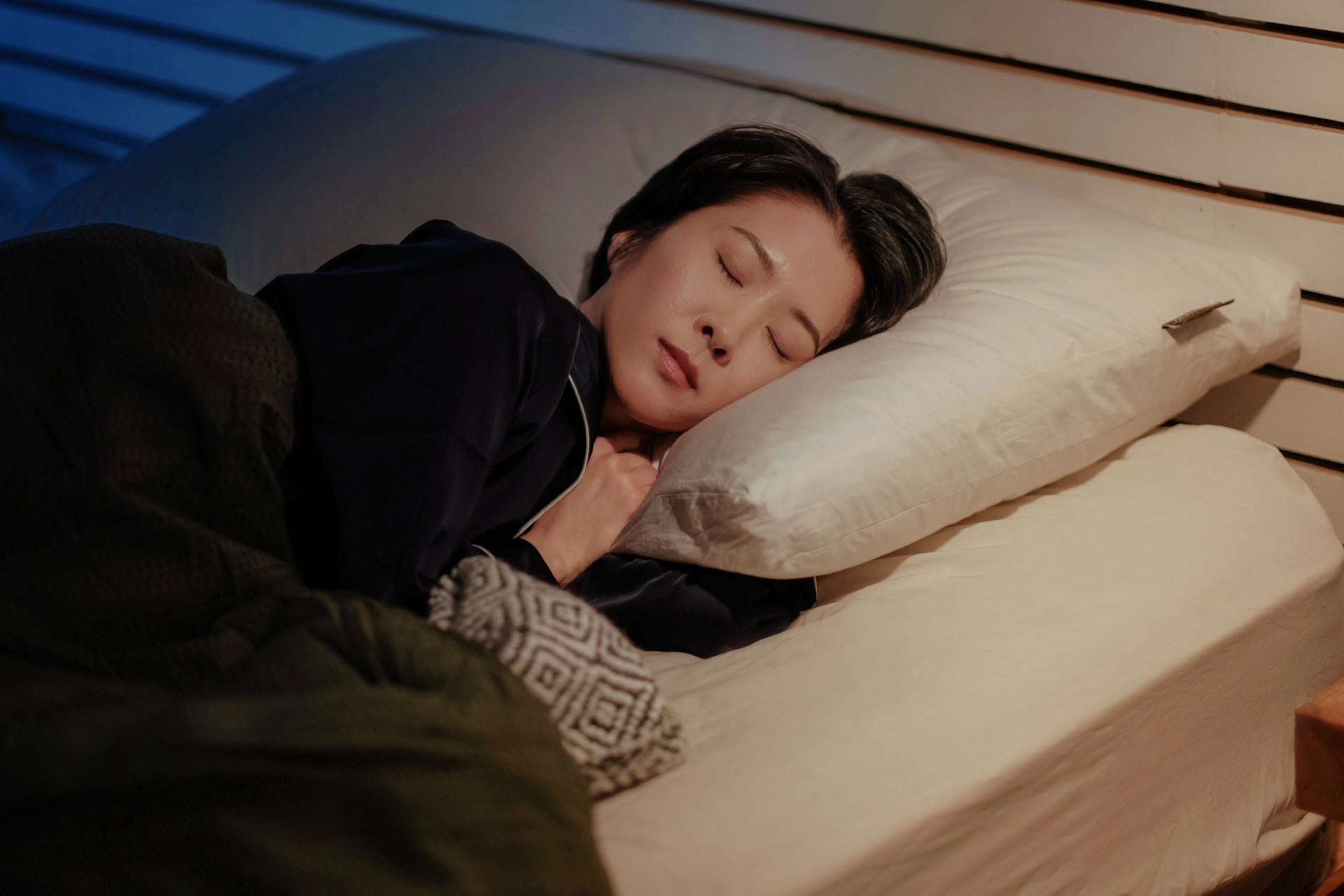How to Choose the Best Pillow for Neck Pain Relief
Waking up with a stiff, aching neck is a miserable way to start the day. If you’re one of the many people who suffer from neck pain, your pillow (or the wrong pillow) might be a significant part of the problem. In fact, studies estimate that anywhere from 1 in 5 to almost half of adults experience neck pain each year – often aggravated by poor sleeping posture and inadequate support at night. The good news is that the right pillow can make a world of difference in keeping your neck aligned and pain-free. This guide will walk you through how pillows affect neck health, what features to look for, and how to find the best pillow to relieve neck pain.
Why Your Pillow Matters for Neck Health
When you lie down to sleep, your pillow’s job is to support the natural curve of your cervical spine (the neck region) and keep your head in neutral alignment. “Neutral” means your head isn’t pushed too far forward, tilted back, or leaning to one side; it’s essentially a straight continuation of your spine. If your pillow is too tall or stiff, it can force your neck into an awkward angle (for example, chin jutted toward your chest if you’re on your back). If it’s too flat or soft, your head might sag, leaving your neck without support. Over hours of sleeping, these misalignments strain muscles, ligaments, and joints in the neck.
Common signs that your pillow isn’t supporting you correctly include:
-
Waking up with neck soreness or tightness in the shoulders.
-
Experiencing tension headaches in the morning (often starting at the base of the skull).
-
Feeling the need to constantly adjust or fluff your pillow at night.
-
Numbness or tingling in arms (this can happen if a poor pillow causes nerve compression or if you place an arm under the pillow for support).
A supportive pillow helps distribute the weight of your head (which is about 10-11 pounds) evenly and keeps your neck aligned with your chest and lower back. This alignment is crucial – think of your spine as a straight line from the base of your skull to your tailbone. Any kink or curve in that line, sustained for hours, can lead to pain. By maintaining proper alignment, a good pillow essentially lets your neck muscles relax. Instead of working overnight to hold your head at a bad angle, they get to rest.
What to Look For in a Pillow for Neck Pain
Choosing a pillow to alleviate neck pain involves a few key considerations. Here’s what to keep in mind as you shop:
1. Proper Loft (Height): The pillow’s loft is a critical factor in alignment. The ideal height depends on your sleeping position (more on that below) and your body. As a general guideline, side sleepers usually need a higher pillow than back sleepers do, because there’s more distance between the mattress and their head when lying on the side (due to shoulder width). Stomach sleepers need the thinnest pillow of all (if any pillow at all) to avoid craning the neck. The goal is to fill the gap between your head/neck and the mattress just enough to keep everything straight. When testing a pillow, lay in your usual sleep position and have someone check that your neck isn’t angled up or down. If you’re by yourself, try it in front of a mirror or even take a quick selfie from the side; you’ll be able to see if your head is level or if it’s tilted.
2. Supportive Materials: Memory foam (especially shredded memory foam or contour-shaped foam) and latex pillows are often recommended for neck pain sufferers because they hold their shape and offer consistent support. These materials mold to the curve of your neck, providing pressure relief while still keeping uplift for your head. On the other hand, very soft pillows filled with down or polyester fiber may collapse too much under the weight of your head, leaving your neck unsupported. That doesn’t mean you can’t use a down or fiberfill pillow, but you might need to plump it up or even use two – and that can be unstable. A single, well-shaped memory foam or latex pillow can often maintain the right elevation all night. Water-filled pillows are another option; they let you add or remove water to adjust firmness and they conform to the neck well, though some people find them too heavy or unusual feeling.
3. Ergonomic Design (Cervical Contours): Some pillows are specifically designed for neck support, often labeled “cervical pillows” or “orthopedic pillows.” These often have a higher bolster under the neck and a dip where the head lies, following the natural curve of your neck. If you experience chronic neck stiffness, a cervical contour pillow might help maintain alignment. For example, a common shape is a wave or S-curve, with a thicker area for under the neck and a thinner area for your head. This design can cradle the neck and prevent your head from rolling to one side. When considering one of these, ensure the contour’s size matches you (some come in different heights for different body sizes). They can feel unusual at first if you’re used to a traditional pillow shape, but many people report significant neck pain reduction with a well-fitted cervical pillow.
4. Adjustability: If possible, opt for a pillow that allows you to adjust the amount of filling or its height. Adjustable pillows are excellent because you can customize them to your exact comfort needs. When dealing with neck pain, even a difference of half an inch in pillow height can change how your neck feels. Being able to tweak the pillow – for example, removing a handful of fill to lower it or adding one to raise it – can help you dial in the precise support your neck requires. Some pillows come with removable inserts or layers for this purpose. If you can’t get an adjustable pillow, make sure you try out pillows in person (if possible) or buy from a retailer with a good return policy, so you aren’t stuck with one that doesn’t work for you.
5. Firmness (Not Too Hard, Not Too Soft): Firmness is separate from loft, though the two can interact. For neck pain, you generally want a pillow that is medium-firm: firm enough to hold its shape and support under the weight of your head, but with a bit of softness to cushion pressure points. If a pillow is too firm (imagine resting on a solid foam block), it might put pressure on the back of your head or ear and be uncomfortable, and you might also find that it doesn’t allow your head to sink in enough to keep the neck aligned. If it’s too soft, your head will sink right through and not get support. Memory foam and latex tend to have a good balance – they compress under pressure but still push back enough to hold you up. Feather pillows can be problematic here: they’re soft and can be adjusted by moving the fill around, but they don’t hold that adjustment; feathers will migrate during the night, and you might end up with flat spots.
6. Pillow Size and Shape: Standard, queen, king – the size doesn’t usually affect neck support directly, but make sure the pillow is long enough for your shoulder width if you’re a side sleeper (so your head isn’t teetering on the edge). The shape can matter; aside from the mentioned cervical designs, there are also pillows with cut-out shapes for shoulders or ones that are more rectangular vs. traditional pillow shape. These design elements can be beneficial. For example, a pillow with a shoulder cut-out allows a side sleeper’s shoulder to slide under, so the pillow supports the neck without pushing on the shoulder. Think about your typical issues: if you’re a side sleeper whose shoulders always feel scrunched, a different shape could help.
Sleeping Positions and Neck Pain: Finding the Right Fit
Your sleeping position plays a huge role in what kind of pillow you need for neck pain prevention:
-
Side Sleepers with Neck Pain: A side sleeper generally requires the most pillow loft. That’s because the pillow needs to bridge the distance between the mattress and your ear, roughly the width of your shoulder. If you have broad shoulders, you’ll need a taller pillow than someone with narrow shoulders. For neck pain, a firmer pillow that doesn’t compress too much under your head is ideal – this ensures it stays tall enough throughout the night. Memory foam, latex, or a buckwheat pillow (which contains hulls that shift to fill spaces and hold position well) can all work. You might also consider using a small roll or rolled towel tucked into your pillowcase right under your neck for extra support, especially if your pillow is on the softer side. This helps maintain the curve of your neck while the pillow supports your head. Side sleepers should avoid pillows that are too low or soft, as that will let the head tilt downward, straining the neck.
-
Back Sleepers with Neck Pain: If you sleep on your back, the aim is to keep your face looking straight up, not angled towards your chest. You’ll want a medium loft pillow, something that supports the natural curve of your neck. Often, back sleepers benefit from a pillow that has an elevated neck support area (like a cervical pillow) or even just placing a small cervical roll under the neck. The pillow should be supportive enough to hold your head at a slight incline. Too much loft will push your head forward (leading to a “text neck” type posture overnight). Too little loft, and your head falls back too far, which can also compress joints. Memory foam and fiber pillows can both work for back sleepers, but pay attention to how well it keeps your neck supported. One trick is to slide your hand under your neck when lying on a pillow – if there’s a large gap, your pillow might be too flat; if your throat/chin area feels sharply bent, it’s too thick.
-
Stomach Sleepers with Neck Pain: Stomach sleeping is notoriously tough on the neck, because your head is turned to the side and the neck is arched back due to lying flat. If you have neck pain, one of the best things you can do is try to train yourself to switch to side or back sleeping. However, if you just cannot fall asleep any other way, then you absolutely need a very thin, soft pillow – or even no pillow under your head at all. Some stomach sleepers use a slim pillow under just their forehead, which keeps the face slightly off the mattress but allows them to breathe, all while keeping the neck more neutral (imagine facing downward with a tiny bit of lift to reduce twisting). Also, consider putting a pillow under your stomach/hips; this can reduce the arch in your lower back and indirectly take some strain off your spine. There are pillows marketed for stomach sleepers that are extremely low loft (less than 3 inches thick) and very pliable. These are the only types that might not worsen neck pain in the prone position.
-
Combination Sleepers: If you change positions through the night, you need a pillow that can accommodate both side and back (or whatever mix you do). For neck pain, an adjustable pillow or one of medium height and firmness is usually a safe bet. You might start the night on your side and roll to your back early morning; a pillow around 4-5 inches thick that is somewhat malleable can work. Shredded foam pillows are often great for this, as they can be fluffed on the side for more loft, but they’ll squish down a bit if you roll onto your back. Combination sleepers should avoid extremely firm or extremely contour-shaped pillows that “lock” you into one position.
Replacing and Caring for Your Pillow
If you’re dealing with neck pain, consider how old your current pillow is. Over time, pillows break down: foam gets softer, fiberfill clumps up or flattens out, feathers lose fluff. An older pillow might not be giving you the support it once did. Experts often recommend replacing pillows every 1-2 years, but for someone with neck issues, you should be attuned to signs of wear. If your pillow has lost its resilience – meaning it doesn’t spring back when you press on it, or it stays lumpy – it’s probably time for a new one.
Keeping your pillow clean is also important. Allergens like dust mites can accumulate and possibly contribute to muscle aches (due to inflammation) or simply disturb your sleep quality. Most fiber and foam pillows come with removable washable covers. Use them, and wash the cover regularly. Some pillows (like many memory foam ones) aren’t fully washable – but using a protector helps keep sweat and dust out of the foam.
Other Tips to Help Neck Pain
While a proper pillow is a key piece of the puzzle, don’t forget other factors that influence neck comfort:
-
Mattress Support: Your mattress works together with your pillow to maintain spinal alignment. If a mattress is too soft or saggy, your body might sink in too much, and even the perfect pillow won’t keep your neck aligned. Make sure your mattress gives appropriate support for your weight and sleeping style.
-
Neck Stretches and Exercises: Doing some gentle neck stretches before bed and after waking can help ease tension. For example, slowly tilt your head side to side, or gently roll your head in a circle to loosen tight muscles. Strengthening exercises (under guidance of a professional if needed) can also improve your neck’s support structure over time.
-
Consistent Sleep Posture: Try to avoid sleeping in odd positions, like with your arm under your pillow or your head propped up on multiple pillows. These may temporarily feel comfortable but can strain your neck over hours. Aim to fall asleep in a posture that you know is aligned – even if you move in the night, starting well increases the chances you’ll maintain better posture unconsciously.
-
Heat Therapy: If you do wake with a sore neck, a heating pad or warm shower can increase blood flow to the area and loosen tight muscles. While this doesn’t fix the pillow issue, it can provide relief while you make adjustments to your setup.
Remember, if neck pain persists or is severe, it’s wise to consult with a healthcare provider. Sometimes what we think is “just a pillow issue” could be aggravated by an underlying condition like a pinched nerve or degenerative disc. But in many cases, improving your sleeping alignment with the right pillow and habits can dramatically reduce those morning aches.

If you’re looking for a pillow designed specifically to combat neck pain, the DonaHona Cervical Pillow is a top choice. This ergonomically contoured memory foam pillow has a clever shape that cradles your neck and head, promoting proper alignment all night. It features dual height zones and a central cavity – meaning side sleepers get the lift they need and back sleepers get gentle neck support without too much elevation. By keeping your cervical spine aligned and supported, the Cervical Pillow helps relieve pressure on sore neck muscles. It’s an excellent solution for anyone who’s tired of waking up with neck stiffness and wants a professional design that encourages healthy sleep posture.










Leave a comment
This site is protected by hCaptcha and the hCaptcha Privacy Policy and Terms of Service apply.